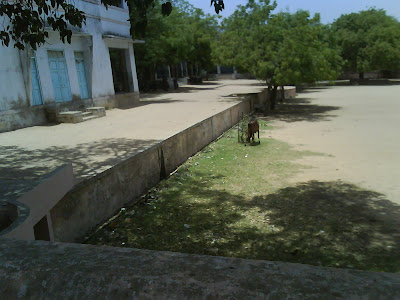




Dhrangadhra is a city and a municipality in Surendranagar district in the state Gujarat in India. It is one of the eight first class states(13 GUN SALUTE)of Kathiawar agency during Bombay Presidency of British Raj.














With both sacred and secular architecture influenced by local medieval history, Dhangadhra today is a modern town with the population of about 100,000, which includes Hindus, Muslims, Zoroastrians and Jains. The affluent are traders in the local cotton and salt trade that has existed for over 300 years, while the majority are farmers and shopkeepers. It has industries such as DCW with chemical products, Mausam brand food products such as Spices, delecious pickles in various flavours, sauces, pastes, sherbats, ketchup etc by K.P. Industries and many other industries in GIDC area. The provincial town boasts several hospitals, schools and a college. Along with regular telephone and portal services, email facilities are also available in the town.
Temples, step-wells, palaces and mosques from various historical periods exist in various states of preservation. There are more than 100 places of worship, and ancient art and craft traditions such as stone sculpture, jewellery making, tie and dye fabrics and embroidery prosper.
Dhangadhra is a railway junction on the Western Railway (India) and is connected to Ahmedabad and other regions of Kutch and Saurashtra by road and rail links. There are auto rickshaws (three-wheeler hooded taxis) and larger un-hooded three-wheelers called Chhakada which typically run on modified Royal Enfield engines, are available for travel within the town and surrounding areas.
The Rabari and Bharwad farming communities that raise cattle, sheep, goat and camels live in villages surrounding the town. Each summer, the outskirts of the town also hosts a camp of snake charmers. Dhrangadhra is also the headquarters of the Deputy Conservator of Forests, which is responsible for the Wild Ass Wildlife Sanctuary on the Little Rann of Kutch, home to the last three species of Asiatic Wild Ass.
Dhrangadhra has a lond history starting from Lower Paleolithic Period. The evidence come from the revire bed of bhadar river which flows alonwith the Dhragadhra taluka. Moreover, there are lots of sites spreading over the vast land belonging to Harappan Period. Recent studies in the area suggests that the Dhragadhra and Halvad taluka was the fornteer of the so called sorat Harappans which bifercates the Sidhi Harrapans of Kutch & Sindh. These are recent studies made by Arun Malik, a P.hd schoolar of The M.S.Univercity of Baroda and now he is with Archaeological Survey of India.
Originally, the state of Jhalawad was founded at around 1090 CE. In 1735 CE, Dhrangadhra was founded as its capitol and the state was renamed as Dhrangadhra-Halvad state from the initial name of Kuwa, Halwad.
In Sanskrit Dhrang means a Stone, and Dhara means the Earth. It is believed that because of the strong and widespread black stone bedrock found immediately under the soil of the place, the town is thus named “Dhrangadhra”.
The Maharaja of Dhrangadhra maintains a Bodyguard of two mounted troops and two companies of Infantry known as the Dhrangadhra Makhwan Infantry. The officer shown in Full Dress in our picture is the Commandant of the Infantry. The State forces are mostly composed of Rajputs, but have an admixture of other Brahmins, Patels, Sadhus, Jains and also of Musalmans and also many casts are lived in the Dhrangadhra.
Dhrangadhra is one of the smaller states of Kathiawar in Western India, covering an area of about 12 hundred square miles and having a population of approximately 90,000.
This is the Dhrangadhra's Flag..









